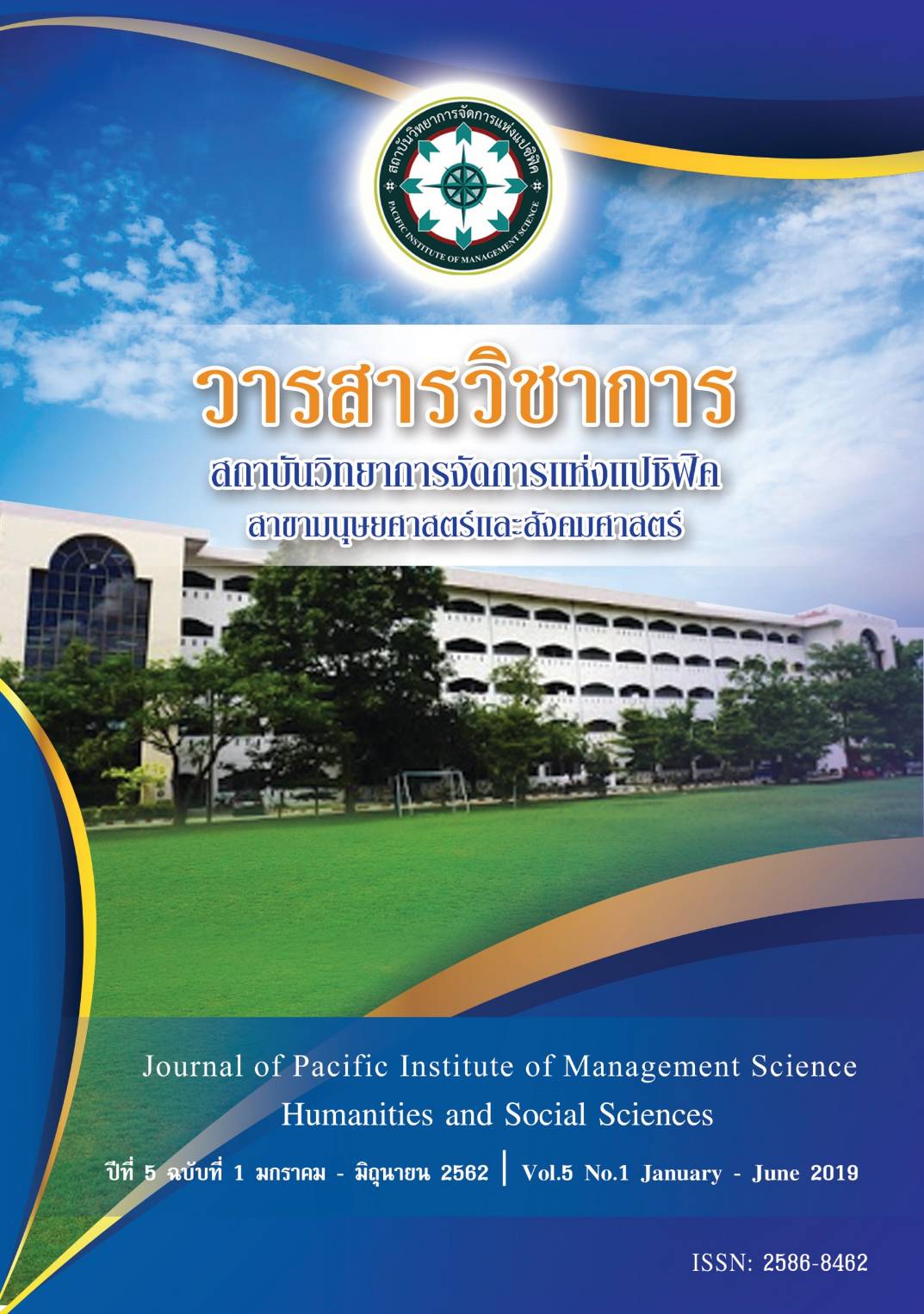Evaluation of Administration of Investment in Mutual Funds in Thailand: Case Study of Application of Security Selection Approach to Predict Marketing Conditions to Improve Market Timing and Mixed Active Portfolio with Passive Portfolio during 2010 - 2014
Keywords:
evaluation of the administration of investment, security selection prediction of market timing, mixed active portfolio with a passive portfolio approachAbstract
The objectives of this research were as follows: First, to facilitate the performance appraisal for the open-ended mutual funds in Thailand, applying the Sharpe, Treynor, Jensen and the Information Ration; Secondly, to provide for the mutual funds managers' performance in respect of market timing under Treynor-Mazuy concepts and Henriksson–Merton model; Finally, to make the comparative assessment concerning the active portfolio management and the passive one, under the Treynor-Black model. The study two hundred samples utilized consisted of the data on the monthly net asset value of the mutual funds for sixty periods over
2010-2015; the studied mutual funds had the performance intervals of no less than five years. The analysis of data made use of multiple regression analysis.
The results of the analysis were as follows: First, based on the Sharpe and Treynor measures, the mutual fund under investigation of more than fifty percent did obtain the abnormal rates of return. Besides, the performance of the one hundred and thirty-three mutual funds had positive Jensen Alpha; similarly, for the Information Ratio, this indicated that the mutual fund managers had effective skills is the fund manager. Secondly, it was found that fund managers under the sample studied were successful in using the market timing strategy. Finally, this study found that most of the mutual fund managers were able to attain their abnormal return by adopting active portfolio management rather than the passive one.
References
Bodie, Z. , Kane, A. and Marcus, Alan J. 2011. Investments and Portfolio Management. 9th ed. New York : McGraw–Hill Irwin.
Bradford D. Jordan, Thomas W. Miller, Steveb D. Dolvin. (2012) ”Fundamentals of investments : valuation and management„ 6th ed. New York : McGraw-Hill Irwin
Brown, K.C. and Reilly, F. (2009), Analysis of Investments and Management of Portfolios, 9th ed., South Western Cengage Learning, Stamford, CT.
Burton G. Malkiel, ”Returns from Investing in Equity Mutual Funds 1971–1991,„ Journal of Finance 50 (June 1995), pp. 549–72. Reprinted by permission of the publisher, Blackwell Publishing, Inc.
Carhart, Mark M., (1997).”On Persistence in Mutual Fund Performance„. Journal of Finance. (March), p.57-82
Chang, Eric C., and Wilbur G. Lewellen, (1984), ”Market Timing and Mutual Fund Investment Preformance.„ Journal Business (January) , p.57-72.
Elton, E.E., Gruber, M.J., Das, S., Hlavka, M. ”Efficieny with Costyly Information: A Reinturpretation of Evidence from Managed Portfolio”. Review of Financial Studies. (6) (1993) : 1-22.
Jensen, M.C. (1969). Risk, the pricing of capital assets, and the evaluation of investment portfolios. Journal of Business 42(2) : 167-247
Downloads
Published
Issue
Section
License
บทความที่ได้รับการตีพิมพ์เป็นลิขสิทธิ์ของ สถาบันวิทยาการจัดการแห่งแปซิฟิค
ข้อความที่ปรากฏในบทความแต่ละเรื่องในวารสารวิชาการเล่มนี้เป็นความคิดเห็นส่วนตัวของผู้เขียนแต่ละท่านไม่เกี่ยวข้องกับสถาบันวิทยาการจัดการแห่งแปซิฟิค และคณาจารย์ท่านอื่นๆในสถาบันฯ แต่อย่างใด ความรับผิดชอบองค์ประกอบทั้งหมดของบทความแต่ละเรื่องเป็นของผู้เขียนแต่ละท่าน หากมีความผิดพลาดใดๆ ผู้เขียนแต่ละท่านจะรับผิดชอบบทความของตนเองแต่ผู้เดียว







